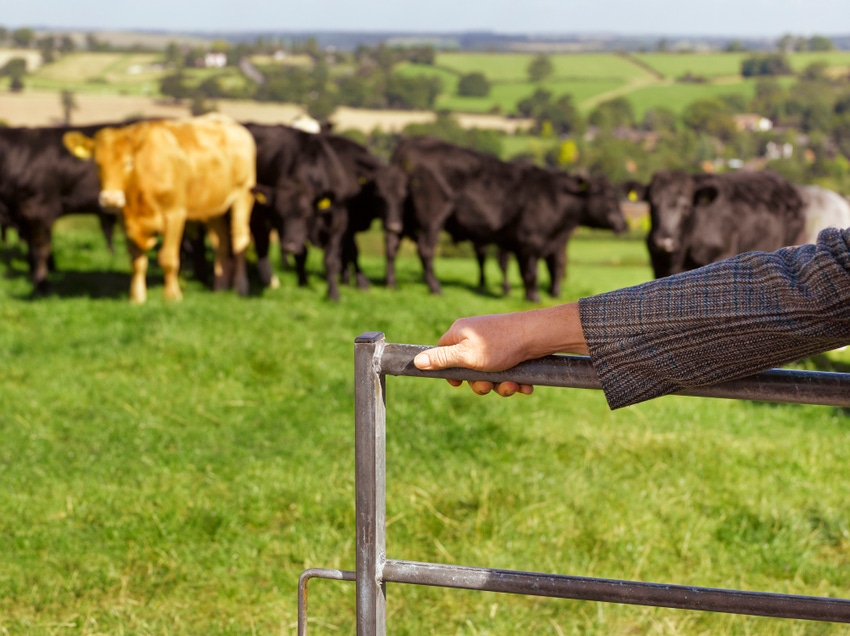Depreciating ranch assets gives you a better picture of your financial health.
February 20, 2020

Most cattle producers are surprised with how much their annual cow-cost truly is. The biggest reason for this is that most producers only factor in their cash costs when calculating annual cow-carrying expense.
The top four expenses on any given ranch are feed, labor, depreciation, and pasture rent. The truth is, two out of the top four expenses are often non-cash costs. Not all ranchers pay themselves, and not all factor in depreciation as a real expense on their operation. Let’s focus on the importance of depreciation for ranch managers.
So, what is depreciation? The Farm Financial Standards Council states depreciation as “The allocation of the expense that reflects the ‘using up’ of certain business assets employed by the entity.”
Many producers would say that it is an exercise strictly used to file taxes, which begs the question; without the IRS would depreciation still exist? The answer is yes because the underlying truth about depreciation is that capital assets (vehicles, machinery, equipment, buildings, and purchased or raised breeding livestock) do not last forever and decrease in value over time regardless of tax situations.
Tax vs. management depreciation
Tax depreciation has a much different objective than management depreciation, and thanks to IRS Section 179, qualified business owners can deduct the full expense of certain purchases in the same year the purchase occurred.
Although this gives the manager an instant reduction on taxable income for the year, this number can cause the depreciation value, and consequently taxable net farm income, to vary greatly on the Schedule F Profit or Loss from Farming form from year to year. Too many producers view this taxable net income estimate as being their true profit and loss. It is not.
Management depreciation, on the other hand, takes a systematic approach to calculate depreciation for the purpose of giving the ranch manager an accurate assessment of net worth and accrual adjusted net income. This approach should be used for business analysis purposes and on a cost-based balance sheet, book method depreciation is recommended.
This method simply takes the original purchase price, estimates a salvage value for the asset, then depreciates the value of that asset in proportion to its “useful life” each year until the salvage value is reached.
For example, a tractor purchased for $100,000 with a salvage value of $15,000 and a useful life of seven years would depreciate (100,000 – 15,000)/7 years = $12,143 per year for seven years until it has reached its $15,000 salvage value.
Breeding livestock are also considered fixed assets that must be depreciated. If a breeding bull, cow, or heifer is purchased, the depreciation method would follow the same scenario as above, adusting for a recommended five-year useful life and a cull value as the salvage value.
Although there is some debate as to how to approach raised breeding stock, we have found the best way to do this is to accumulate the cost of raising the breeding bull or heifer until that animal is then transferred into the breeding stock as a fixed, depreciable asset. That transfer point occurs when the bull breeds a female, or the heifer weans a calf. Until that point, they are considered a current asset that is not depreciated.
Once the accumulated cost to raise the animal from birth to the point of transfer is estimated, that number becomes the basis off which the animal is depreciated. For example, a heifer with accumulated expenses from birth until her first weaned calf of $1,500 with a cull value of $750 and a useful life of five years would depreciate (1,500 – 750)/5 years = $150 per year for five years until she has reached the $750 cull value.
There are some misconceptions regarding market value appreciation of depreciable assets. For accounting purposes, the opposite of depreciation is not appreciation. Because depreciation is a set, calculatable figure, even if an asset’s market value increases, its depreciation expense does not change. The fact that the asset may have appreciated in market value only applies when the depreciated asset is sold.
The whole premise behind management depreciation is to give the ranch manager a figure for the machinery, equipment, buildings, improvements, and breeding livestock to set aside for replacing assets when they are no longer able to be used. If the manager can include these expenses in their annual budget, it will prevent them from becoming over-leveraged and increasing their interest expense when the time comes to replace those capital assets.
Hoffman is a Colorado State University beef Extension specialist.
You May Also Like



